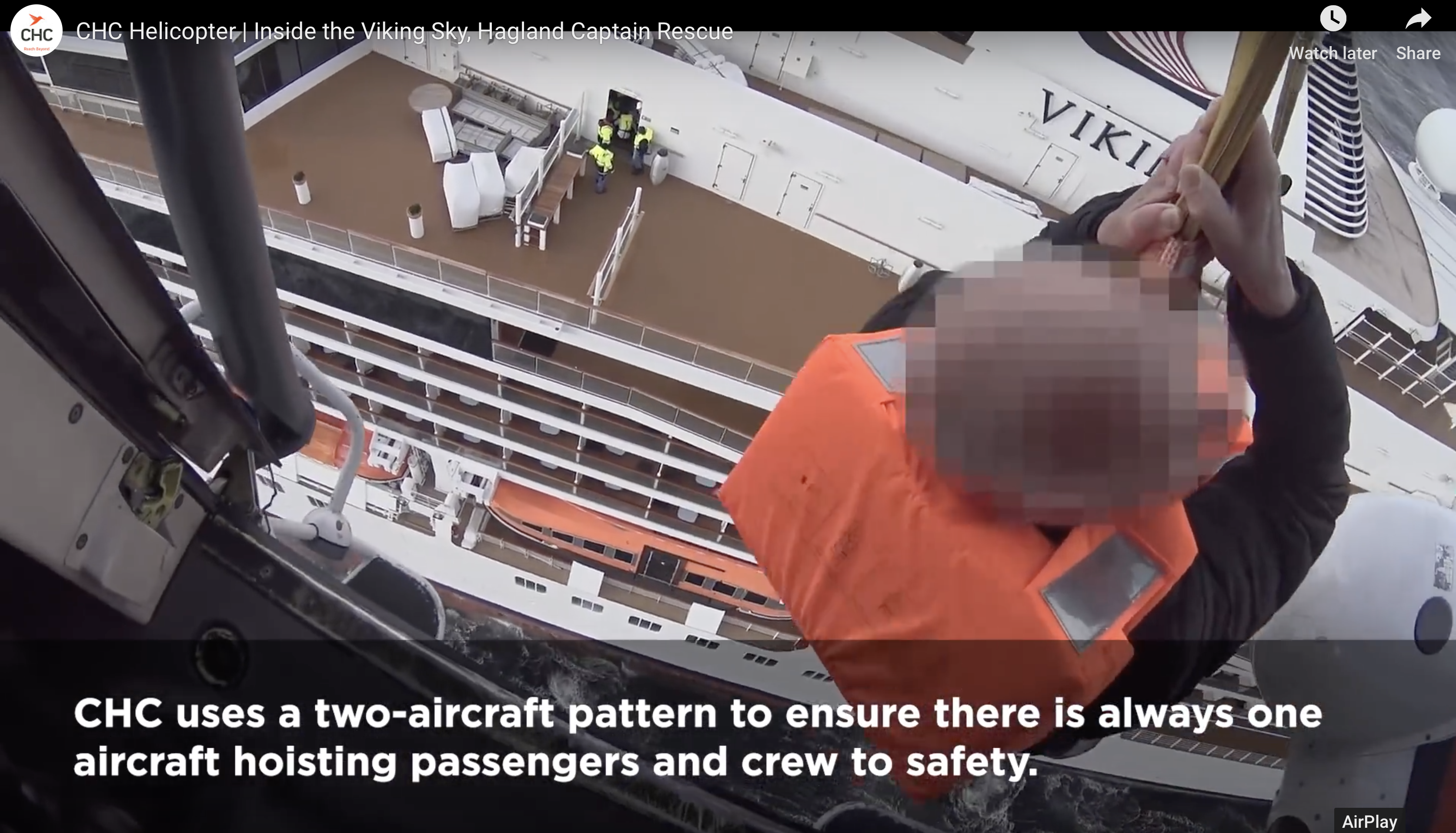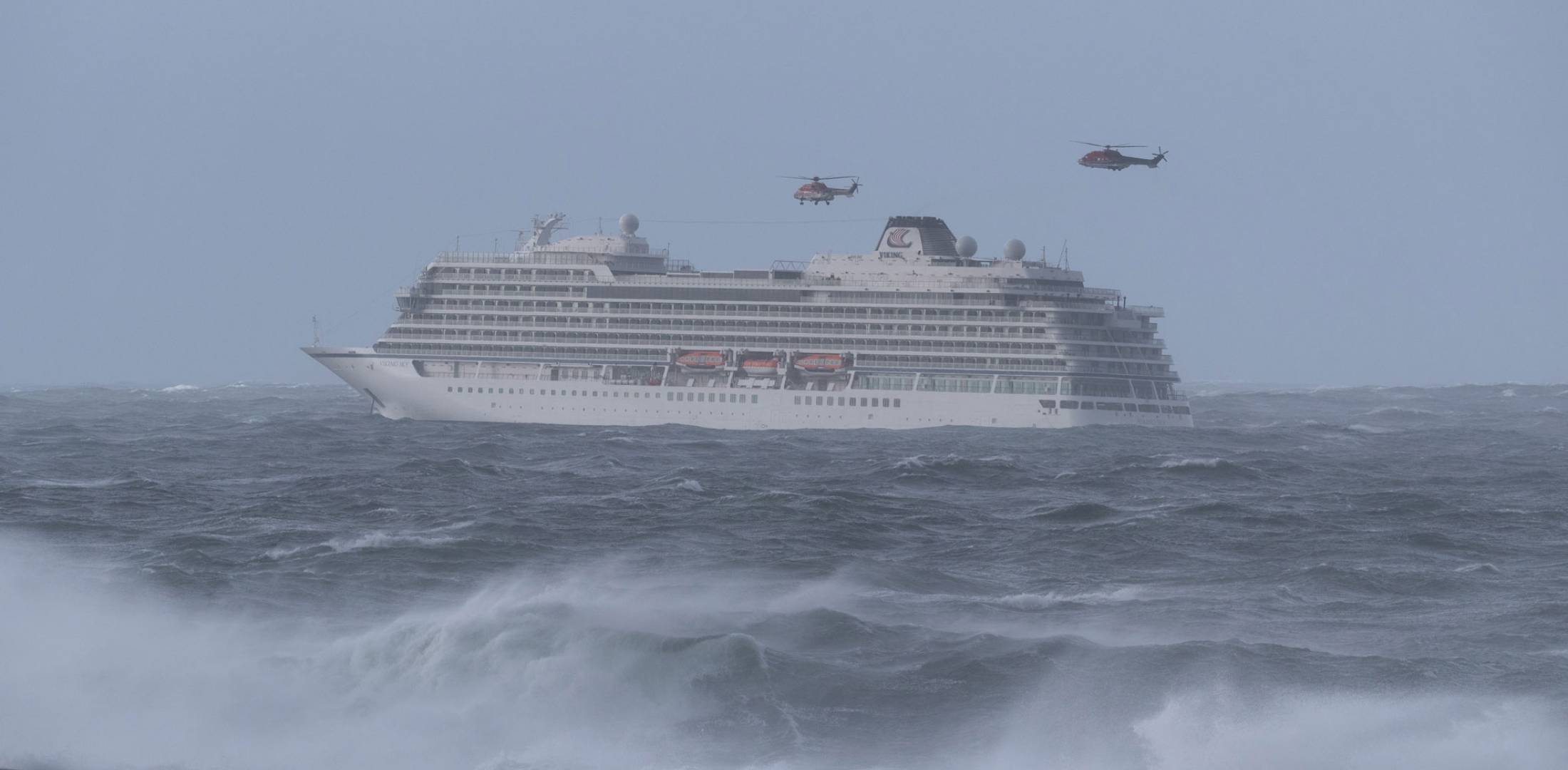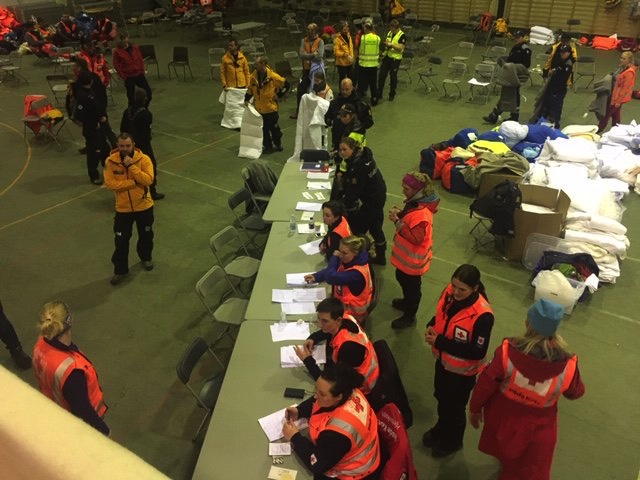

A successful rescue mission in fierce weather that captivated the world on 23 March 2019. This is the story of the Viking Sky: a cruise ship with 1373 people on board which lost power off the coast of Norway. The strong winds and high waves made the rescue operation even more dramatic. A second ship in the vicinity running into trouble, added to the already highly challenging situation.
The world watched with distress the images that emerged from the cruise ship and followed on (social) media the awe-inspiring hoisting operation as it unfolded throughout the afternoon and the entire night. By 10:30 am the next day 479 out of the 1373 passengers were successfully evacuated by helicopter. This makes it the largest passenger ship rescue operation to date. The question for the Viking Sky ship owners will undoubtedly be “What went wrong?”. But the rescue mission is one which deserve the exact opposite “What went right?” Here’s a first-person account from Capt. Jim Nielsen and the crew of Rescue 9 highlighting the importance of the impeccable organisation behind the mission, the competence, skills, the benefit of training and a well-rested crew.
Crew of Rescue 9:
Captain - Jim H Nielsen
Copilot - Stian Nagelsen
Hoist Operator - Ivar Lobrot
Rescue Man - Erlend Birkeland
Medic - Alte Skrede
We, the crew on SAR 9, had been onshore and were preparing to fly back offshore to Statfjord B, where CHC provides Search and Rescue service for Equinor (note editor: energy company headquartered in Stavanger, Norway). We were relaxed and had jokingly sent our rescue man and medic out for some food so they could uphold their readiness. The payback was that they came back still eating ice-cream while we packed the rest before flight. We were all in the helicopter, just waiting for our medic, who was looking very intensely at his phone while walking to the helicopter. Minutes later – after our check was complete and we started taxiing – he would tell us about the breaking news: a cruise ship in trouble at Hustadvik. It was all over the news!
We lined up on the runway and took off. When passing 500’, the tower came up on the radio.
“SAR 9 – you are requested to proceed directly to the cruise ship”
– there was a brief moment of silence, then we replied
“Rodger – continuing right turn directly, and canceling IFR”
The tower gave us the latest coordinates and renamed us “Rescue 9” which is the callsign that indicates that we have priority. It was unspoken, but we all knew that this would be a serious matter and we all went from our relaxed mode into what we could call preparing mode. The cabin started to plan how many could be in the seats, on the floor, what they could expect in terms on injuries, number of patients, etcetera. In the cockpit, we started to calculate the time to the cruise ship, expected available people we could take onboard, endurance in the area, refueling areas and so forth. The weather was showery and wind of around 50kts, so we set course VFR along the coast and had about 1 hour and 30 minutes before arriving. We scanned the maritime emergency frequency (CH16) and our airborne frequencies. Due to the terrain we where relatively close before we could hear what was actually going on in the area. When we saw the ship for the first time, I remember the silence in the helicopter. Just like for a split second we had to digest what we actually saw.
Rescue 5, the CHC SAR helicopter normally stationed on Heidrun responded, and quickly gave us the layout of the situation: drop off zone for the passengers, refueling spot, and a landing area for waiting. We acknowledged and lined up behind Rescue 8, another CHC SAR helicopter normally stationed at Florø. Recue 40 from the national rescue service had just landed for refueling. At this point we were lined up and could see the movements of Viking Sky and the scope of everything.
We had just had a training flight the day before in 8,5-meter waves and 50kts of wind. Not very different from these conditions. So, the tasks separately weren’t much different than what we trained for. The big challenge was the scale of this: the Viking Sky mission included 59 hoist cycles with older passengers, and the fact that we ended up having 2 ships in distress in the same area.
We quickly briefed each other and got ready for a long night. I was flying pilot on the hoist operations, and the pilot next to me had to keep track of passengers that came onboard, check fuel, and at the same time keep an ear on the radio. He did all that and still had capacity to tell me every time the ship rolled, pitched or fishtailed in advance to give me a heads up before the ship actually moved. I was focused on the hoist operator’s guidance, keeping us safe from the ship, and keeping the people we had in the wire safe at all time. At the same time, I listened to the air to air channel to keep my situational awareness up to date, and CH 16 to stay updated on the ship’s needs. The medic was the organizer in the cabin. He had to carry some of the older passengers back in the cabin, and he started to get tired, so on the last lift we only took 15 passengers before returning to set them off.

The workload was continuously high, and the circumstances challenging, but we managed the stress and never felt unsafe.
The ship’s movements were also different from a ship in normal forward movement. The waves this close to shore were both coming from the sea and were reflected from shore, and the ships anchors were also out which all contributed to the unfamiliar movements.

When we started the first lift, we quickly got into good routine and our teamwork worked perfectly. In just 30 minutes we had 22 persons onboard and returned to the sports hall where local emergency staff had established a reception center. When we landed and I saw all the people that came out of the helicopter and were taken care of, I was really impressed with the level of commitment.
After the first lift, we still had fuel for about 1 hour and 40 minutes and one of the other helicopters needed refueling more urgent than us, so we returned to the established waiting area and landed. ATC had taken over a more active role as “on scene coordinator”. They were able to give an estimate of when we could expect to be ready for the next lift, and they quickly established a circuit for us.
On our way out to the second lift at Viking Sky, we heard a second MayDay call on CH16
“Mayday-mayday-mayday, this is Hagland Captain, we are capsizing”.
In the cockpit we looked at each other with disbelief, and the first comment was a short “really?” … like is this really happening? The active role by ATC was very important in this situation as our situational awareness was split between two very special cases in such a small area with that many assets both in the air and in the water.
We could see the vessel so we rerouted and were hovering next to the second ship within minutes. Hagland Captain wanted to manually lower the anchor to avoid running onshore. They had no power and no lights, so we were on standby next to the ship until we where low on fuel. During this time, we had radio communications with ATC so they could have another helicopter ready when we left Hagland Captain.
A refueling spot had been established at a nearby school ground. This was very efficient and a factor that gave us comfort so we could focus on the hoist operation. The initial uncertainties and challenges became routine surprisingly fast. That was an advantage since it was dark now, and the weather with strong winds and showers of rain and hail made hoisting very challenging. We completed 2 more lifts. Between them we contacted our Operations center on sat phone to get an update on our replacement crew. The team at the operations center had a long night as well, and gave us the support we needed to be able to concentrate on the mission.

The relief crew were planned to arrive around midnight in Kristiansund. We made the third lift, refueled and returned to Kristiansund to have the helicopter ready for the next crew. After we landed, we made all the preparations for the next crew, so they could have the best possible transit into the operation.
So, all in all, we did what we do when we train. We just did it a lot more, a lot longer and all at the same time with real people that needed our help. It pays off to “train hard and fight easy”.